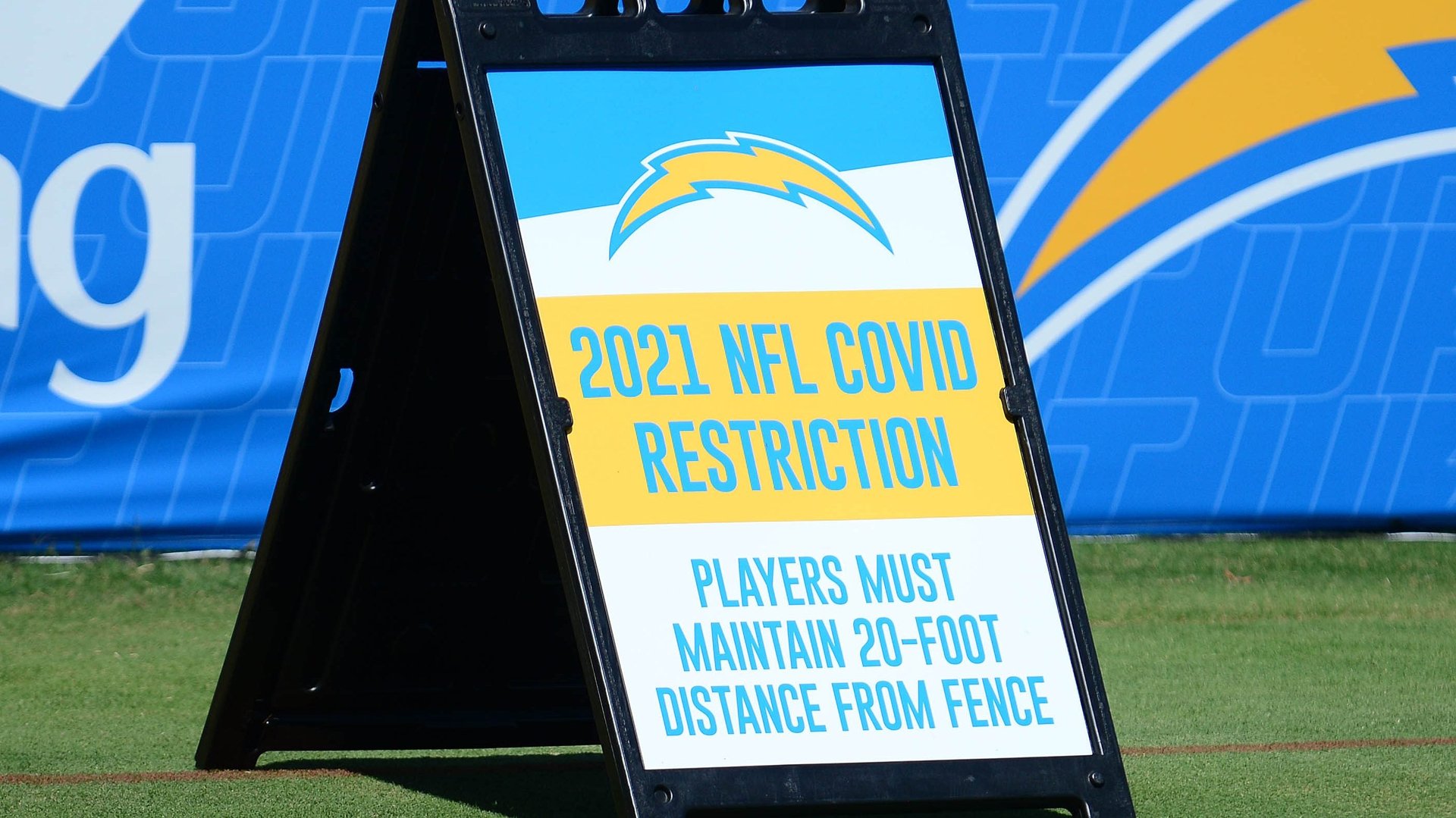Why the NFL is only testing players who have symptoms
Faced with a covid-19 surge affecting more than 100 players, the National Football League (NFL) made a surprising decision over the weekend: to test vaccinated players less—not more—frequently.


Faced with a covid-19 surge affecting more than 100 players, the National Football League (NFL) made a surprising decision over the weekend: to test vaccinated players less—not more—frequently.
In a Dec. 18 memo, NFL commissioner Roger Goodell wrote that this “comprehensive approach to testing” aligns with current public health recommendations and offers “the best opportunity for identifying and treating cases promptly and avoiding spread within the facility.”
The move comes as US sports leagues are grappling with how to move forward with their seasons as the omicron variant infects players, most of whom are vaccinated. The National Hockey League (NHL) announced yesterday (Dec. 20) that it will pause its season through Christmas—the first sports league to do so—as 11 teams deal with outbreaks. Meanwhile, the National Basketball Association (NBA) has postponed seven games.
The NFL’s decision to pull back on testing has flummoxed some public health experts. “I’m just confused by the NFL’s approach,” says Zachary Binney, a sports epidemiologist at Emory University’s Oxford College. Even with the relaxed testing protocols targeting smaller groups of players, he noted, 51 were still placed on the league’s reserve/covid-19 list yesterday, meaning they tested positive for the virus. “All their strategy right now seems to be doing is delaying detecting outbreaks, but not avoiding detecting outbreaks.”
Omicron forced the NFL to rethink its strategy
The NFL’s covid-19 mitigation strategy had been relatively successful until the omicron variant emerged in the US. While the league never imposed a mandate on players, 95% are vaccinated, and were subject to weekly testing prior to the recent change. Under these protocols, fully vaccinated players and staff were allowed to gather at team facilities unmasked, and low covid positivity rates allowed the NFL to stick to its fall playing schedule.
But omicron forced the league to rethink its strategy. More than 100 players reportedly tested positive for the virus last week, prompting the NFL to postpone three games over the weekend. Shortly thereafter, the NFL announced its new testing regime.
“I would not describe it as we are stopping testing, or we are doing less testing,” Allen Sills, the NFL’s chief medical officer, said in a Dec. 18 news conference. “I would simply say that we are trying to test smarter and test in a more strategic fashion.”
Binney acknowledges the NFL did recently reinstitute other protocols that should help contain the spread of omicron, such as requiring all players and staff to wear masks indoors regardless of vaccination status. But he sees the new testing strategy as “waving the white flag” when it comes to preventing transmission. “You are conceding that the virus is going to infect most, if not all, people in the NFL, because you’re not testing frequently enough for it, and it’s going to tear through those vaccinated populations,” he says.
At the same time, Binney says, it’s hard to criticize the league given that its previous covid-19 protocols were more stringent than most other US workplaces. In shifting to focusing testing on symptomatic employees, Binney says, the NFL is essentially adopting the strategy many US employers have favored over the past two years.
Will other US sports leagues follow suit?
Omicron is now the dominant covid-19 variant in the US, and sports leagues will face tough questions as they consider how, and if, to carry on with their seasons in the coming weeks. If leagues’ goal is to contain the virus, Binney says, they will have to continue testing—ideally, players would take rapid tests every day so that those testing positive for covid-19 would be quickly isolated before spreading it to a large chunk of the team.
But if leagues are trying to complete their seasons and award trophies, testing players more will do nothing to help them accomplish that goal.
Binney doesn’t envision the US going back to a pre-vaccination era, when sports leagues played in highly controlled bubble environments. “Leagues are going to find a way to finish off their seasons,” he says. “I don’t think they’re wrong to do that. I think it can be done in relative safety based on what we know about the omicron variant.”